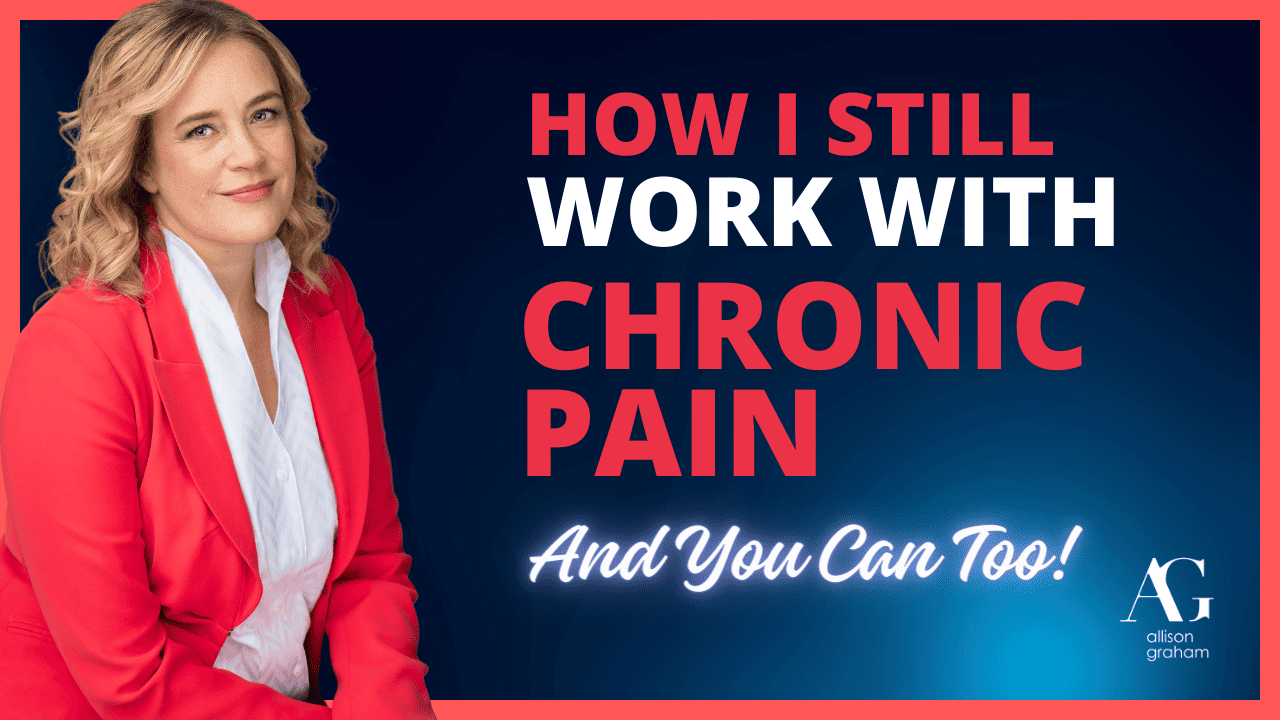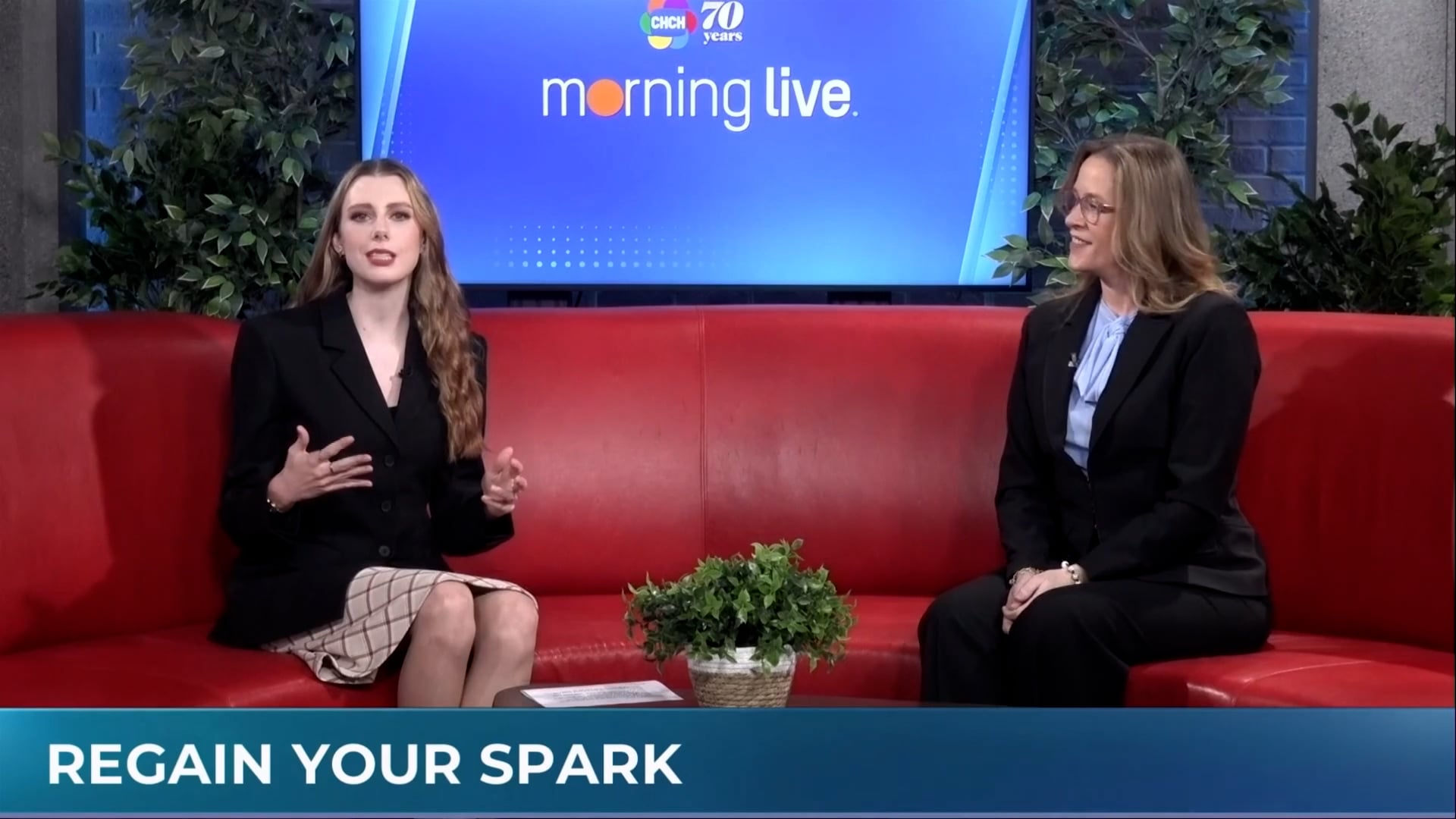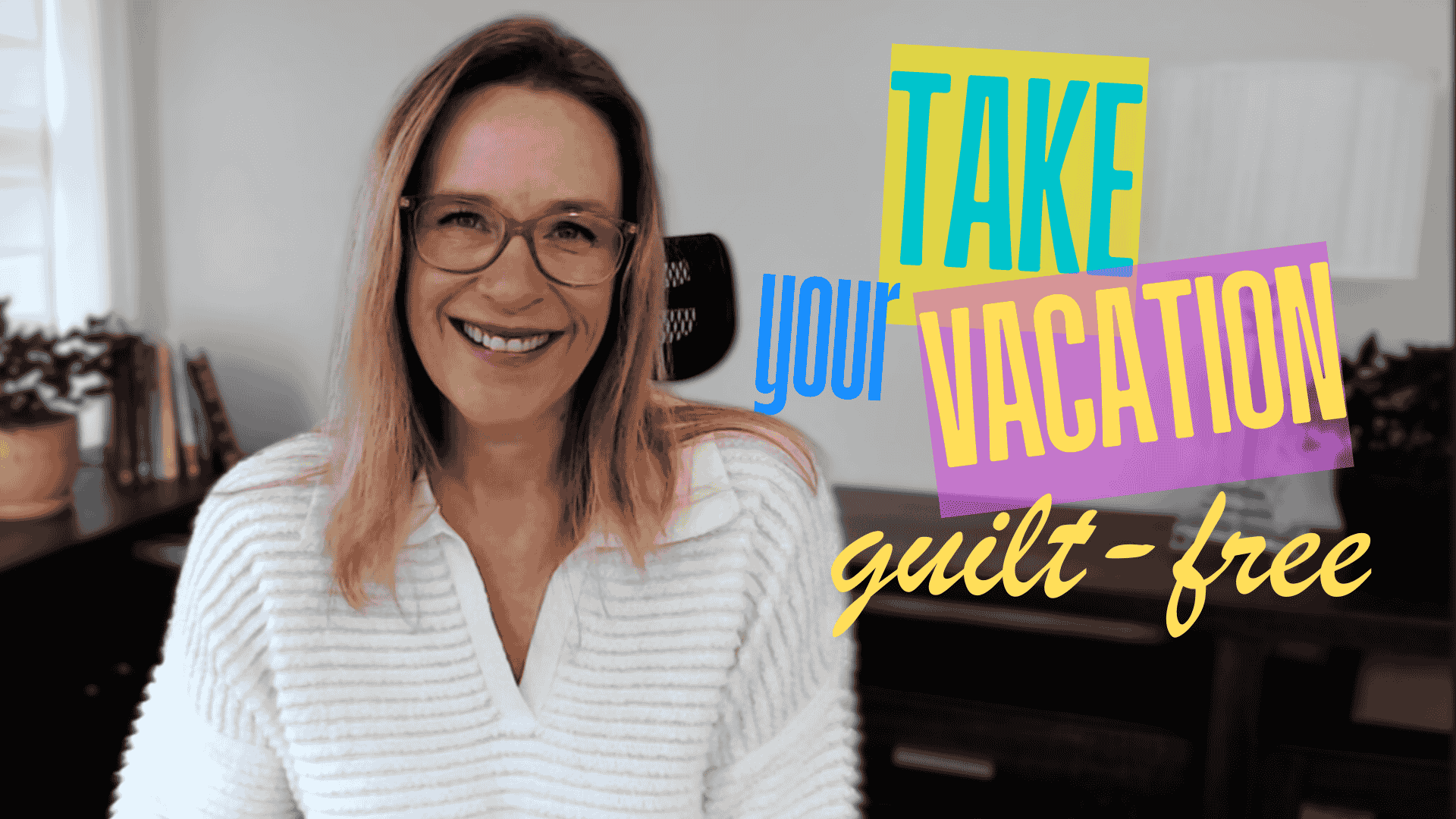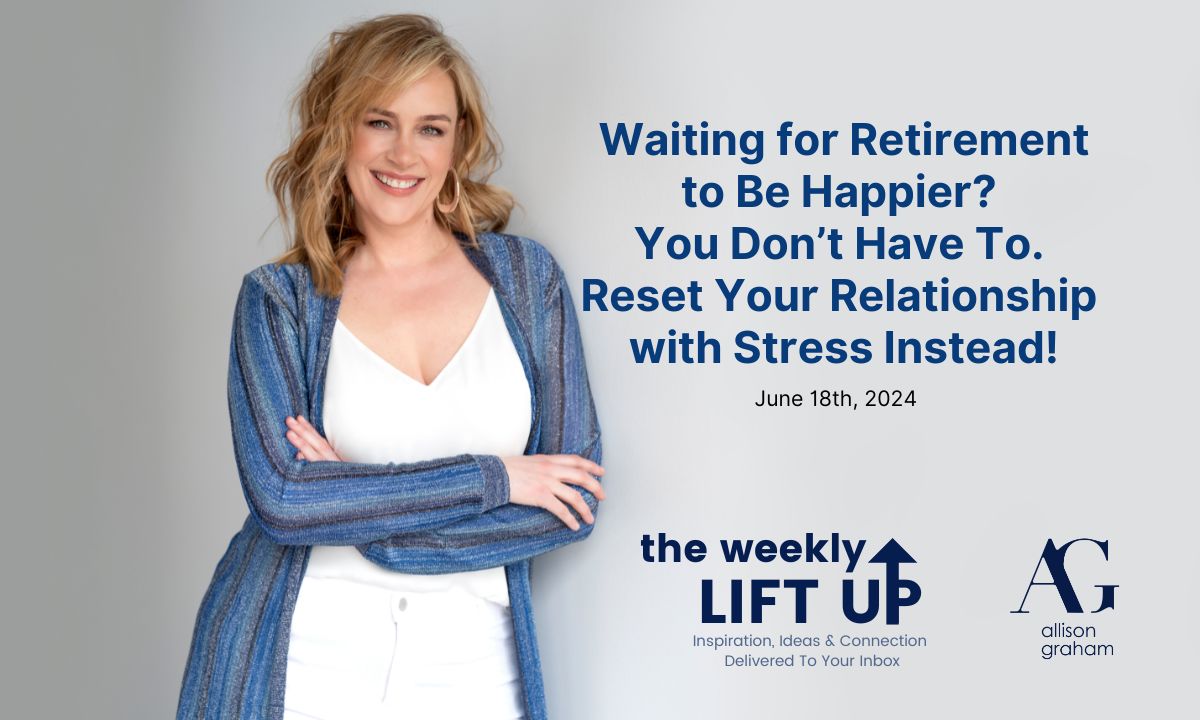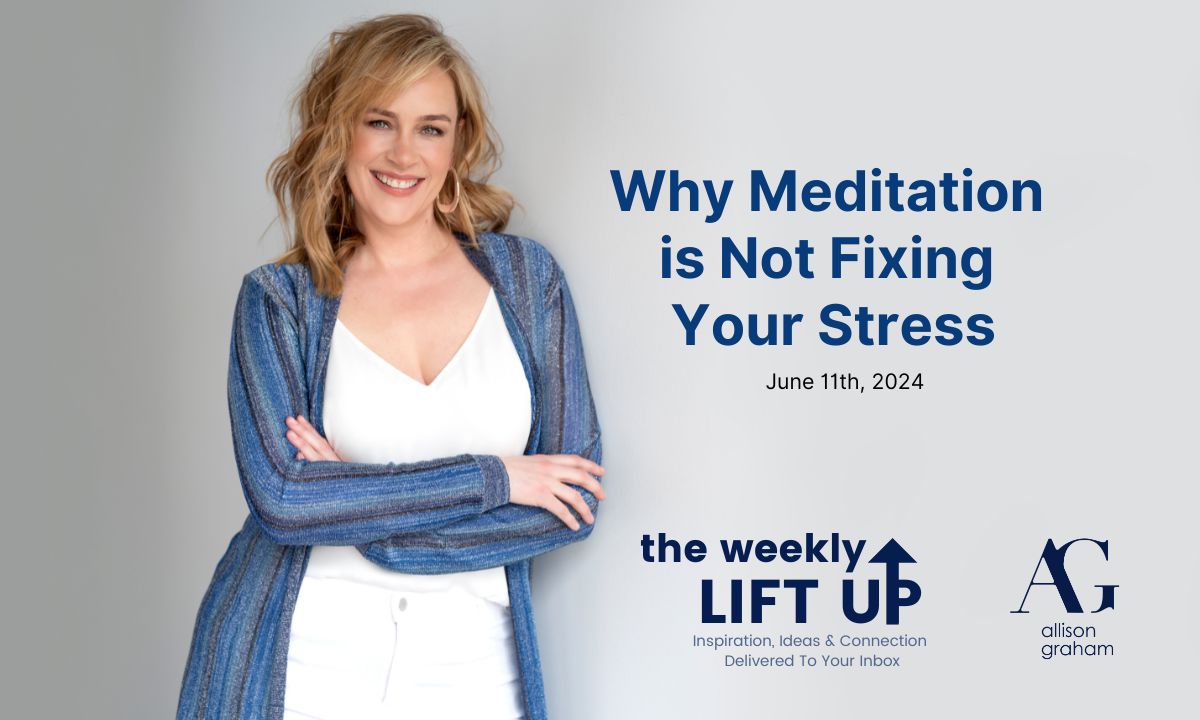Are you struggling to work and find a job while you have to deal with chronic pain?
A LinkedIn connection – Jennifer – asked me about how I kept working even with my chronic pain. She has post-surgical nerve pain, too, and lost her job so she needed some strategies. I ended up sharing this publicly (with her permission!)
Searching for a job can be hard enough, let alone when you have chronic pain. Hope these tips will help you.
Speech Transcript (little to no editing)
Hi, Jennifer, Allison here, obviously, I’m on video, I wanted to do this video for you because, first of all, thanks for sharing with me your situation and losing your job and being restructured out after having a really significant surgery that required lots of healing. And it sounds like you’ve got some pain as well.
No wonder you’re struggling to be focused on finding new work and not feeling really settled. So I thought I would just share with you a few ideas that have helped me when I’ve been in a really high pain level when I’ve come out of surgeries, and had a lot of work to do. And obviously, I’m a consultant and a speaker. And so you know, a lot of that work that you’re doing to try to find a job is the work I need to be incorporating into my days to be sure that my schedule is full.
So having said that, a couple things I want to just say number one, pain sucks. Like, in always of its being it sucks. So we can’t gloss over that. What are the biggest mistakes I made when I was building or not building, building my pain. Experiencing my pain after my surgeries and stuff at the early days was I used it my doctor actually called it my gotta go technique, I would pretend like I wasn’t in pain, I believe that if I powered through, I would just like get everything I needed to get done done. And I would be better off for it. And the truth is it actually the more you push through pain, the more you actually can harm yourself in terms of emotional and mental capacity.
So recognizing and accepting that the pain sucks and going into the pain. Now this is gonna sound weird. But I’ve been paying for a lot of years, 17 years since my surgery that caused neuropathic pain in my pelvis, and I will lean into the pain so you can feel all of it sensations instead of trying to ignore it. And this is going to feel like a really odd thing, but I wrote about it in one of my books, but I kind of think of it as like a grumpy Smurf. Okay, this thing that is like screaming at you and is like, angry and it hurts. And like for me my pain like sort of feels like like a serrated edge knife. And I think of that pain when I was really flaring up and I go into it and I imagine it like a grumpy Smurf. Okay, so it has an identity.
And the more I try to fight it, what happens is, it’s like Grumpy Smurf, like halls, everybody else in the whole village over to hang on and intensify it. So if I can go into the pain and be like, there you are, acknowledge it, feel it, and give it some movement and some respect, it tends to be less distracting, doesn’t make it necessarily go away, but it doesn’t hold on as tight. Okay, and so many people will give you advice, like push through the pain, just let it go. It’s just, it’s not good for you. So honor your pain, recognize that it sucks. validate your self in that situation. Okay.
Now, the next thing I want to recognize is when you are downsized, your basic security is at risk. And so I don’t know your whole situation. If you have financial stability, if you’ve got a buy out anything like that doesn’t even matter. If you’re used to having a job and you don’t have a high high high risk tolerance, then you’re going to be in what I call survival, stress mode. And survival. stress mode is the instinctive stress that signals to us that we are in danger, or someone we love is in danger. These are the big things in our life. And there’s no way to really like if you’re really good at managing your stress, you still can’t stop survival stress from happening, it’s still gonna happen.
Okay, it’s just how we’re built and we have to stop denying it. And so this is the same thing is like okay, you know what, let’s name it. I’m scared I’m you know, feeling overwhelmed by it. I’m disappointed. I loved my old work and now I’ve been you know, downsized or right sized or resized, whatever the word is that they use these days. And so I want to show share with you how this can actually look. So if you imagine your capacity cylinder, alright, or your capacity, you only have so much energy each day to do that. to think, to feel, and to be, and how much you do think, feel and be is, like, that’s often defaulting to old patterns and just like putting out everybody else’s fire, but like, my work is about how do we design that. So you have days that are optimal. But I want to just look at the situation right now with this pain that you’re in. And with the fear and the survival stress that you’re feeling, that to me is the, the having to get a job is an obstacle, so we can solve that it’s gonna take a little bit of work and find the right job, it’s gonna work out I believe in you awesome. The pain you don’t necessarily like, I hope it’s only temporary. You said your surgery was in? I think, December. So what happens is, I want you to imagine it sort of like a noose around your capacity cylinder.
Okay, so what it does is it ends up taking out a significant portion. I love my drawing here, a significant portion of your ability each day to do think, feel and be. And what happens, do think feel be is, we when we’re going through something that’s really pain related, can still expect ourselves to operate as if we had our full capacity available to us. And you don’t. And in my journey, I’ve figured depending on where my pain is, at what point in my surgery journey I was in, even today, like, you know, with the different health challenges that I’m navigating right now, it’s like I’m trying to figure out, you know, where, where my noose is, as well. And really, some days, it can block out, you know, 10 to 20% of my day. And some days, it’s going to take out like, like 90%. Okay, so, you know, this is not the best drawings, obviously.
But if you were to just sort of conceptualize that, and then the thing is, all you have left is what’s not being cinched out or suffocated out by your body’s ability to go through the biological processes of feeling danger of feeling, the pain and having to heal. And the more we deny that this is happening, the worse it’s going to be. Because if we’re trying to push them, what happens is we end up like overflowing our capacity cylinder, and this is how we ended up burning out. All right, so here’s what we’re gonna do about this. Number one. And when I say we, I’m encouraging you, because I’ve offered, you know, this insight for you, I hope you will take it, if you think about your cylinder. I know you saw this, I think in the presentation, but this is for you. So here’s your cylinder. And we think about it as a design, and you only have some of it available. Alright, so we’re gonna get rid of all this stuff.
Hey, now, if you are too much in pain, and you’re spending your days and you’re not doing anything, you’re going to end up down here in this boredom section. And I think sometimes with pain patients, what happens is we get into so much pain that we don’t have any momentum. And then we get into this loop of judging ourselves and feeling like we’re never going to be able to get anything done. And it’s hard to get momentum, right. So if you’re in this area, the way I’m gonna encourage you to come out of it is in little bits. All right. So can you do five minute activity? Can you do a 10 minute activity? We’re gonna talk about how we’re gonna figure out what those are 15 minutes, right? Like, what’s the bare minimum, even if it’s one minute of getting up and going and sending it a note to somebody on LinkedIn, you know, to help move forward the goal of getting your new job career or starting a business, whatever you choose to do, okay? Now, what happens is when we’re winning up at the top, that’s when we burn out.
And so if you this is all done and you’re trying to do everything that you were doing before, and you’ve got this noose around you that’s taking away somewhere between 10 and call it 90% of your daily functioning, because you’re body needs to heal, then you’re going to be pushing too hard. So when I only had two to five hours of functionality in my day after, like when my surgery happened, and by the way, this surgery happened 17 years ago, and it’s still causing problems, and I’m so hopeful for you that that’s not going to be the case, obviously. I mean, that’s, that’s a rare situation. But here’s what I did, I woke up every morning, I acknowledged the pain, I might use some F words, just gonna say we did. Anyway, I would acknowledge the pain. And then I would say, what are the three things that have to happen today for me to keep my life moving forward? Because the my daughter wanted me to go on disability. And I was not okay with that. So was it. And you know, sometimes it was bigger things. And sometimes they were a little thing.
So I have to do sales outreach, I have to write an article that would have at it, right. So I’m going to call these two people for sales. And I’m going to write an article that needed to be published, right. So that was how I spent most of my days. And so really, when you think about getting a job, first of all, I want you to just really get really clear, what is it that you want to do? Where do you want to work? What kind of a company? What are the values of the company? And you’re thinking, well, Allison, I can’t really be picky right now, because I’m in a job perspective, but like, if you’re gonna do the work, do the work to reach the people who you actually want to work with. Okay, so that would be number one. Next thing I would do is I would pull a list of all your LinkedIn contacts is an easy way to start, and just even print it out. And so this is going to take you what, five minutes.
Okay, so there’s one little task when you feel like you can do it. And then I would go through on your iPad, if you have an Apple Pencil, it’s great. You can just highlight who are some of the key people who would be connected to those places, or help you get closer to those places that you have identified as your ideal places to work at this is very simple strategic, like outreach, but I’m going to show you why it works when you’re in pain, right? So highlight the names and get your list sorted, without actually doing the outreach. And because here’s what sometimes happens, we like sit down, and we’re like, Okay, I’m gonna reach out to somebody who needs, you know, who could be a potential hire? And we say, Okay, I want to work for this bank. And so then we go on LinkedIn, and we find the person who works at that bank, and we see one name, and then we’re like, Okay, I’m gonna send them a no, well, then, now we have to go and find who else do we know to look there. Whereas if you actually pull the list, and you just highlight really quickly who those people are, who you’re going to reach out to them, when you’re in reach out mode, you can be like, do to do really, really, really fast. Okay, so that, to me, has been about like, how do you be the most effective with it.
So pull the list, highlight the list, and then do the outreach. Now, a little bit of outreach is better than that is done in small bite sized pieces is more effective than doing a whole bunch and then getting exhausted and having your pain increase, and then not having entered anything energy left your capacity left for the rest of the day. Okay. So I would set a goal and only you know, what your capacity is and how much energy you have. But let’s say each outreach takes you 10 minutes to write a thoughtful note. I don’t know what it will take you but like, or an email, it might take you two minutes, right? But let’s say you know that you can, you know, your pain can last for 30 minutes, like you’re good for 30 minutes, and at 35 minutes, you’re like, I need to move or whatever. So then what we’re going to do is we’re going to set timers for 30 minutes. And maybe it’s less, maybe it’s a little bit more No more than 45 I’m gonna suggest when you have pain, I love 75. But it’s only if I’m really in flow and writing and things like that were the teams to dole My name because my brain just goes into creative mode. Like right now.
Alright, so doing that outreach, but being so strategic about the work that you are doing, you don’t need to have a whole bunch of different coffees or things that are going to make you feel drained. And I hope that helps. But just I like my hope for this conversation was to Look at this capacity cylinder that is a really odd looking drawing. But do think feel be looking at how that is what’s inspiring your energy, what’s draining your energy, and getting a sense of how much how much you have in the tank each day. And where the flow is like is it in the mornings? Is it in the afternoons is it after you have a nap, but like trying to expect yourself to work at the level that you used to work at? When you’re in pain and recovering from post operative recovery, and you’re now in a situation that you didn’t expect to be, is just setting yourself up for burning out.
Anyway, I hope that was helpful for you. I, I know it can be tough, you may enjoy my personal capacity design course let me know if you want to get access to that. I just actually put it up yesterday. So it doesn’t even have like a page or anything. So just send me a DM and it takes this a little bit further. Obviously not with the pain stuff, but I hope that pain conversation. Pain is an individual journey. Nobody can see how you feel. People just kind of probably look at you and they don’t know and so anyway, I see you and validate that whatever it is that you’re feeling probably sucks. And that doesn’t mean it needs to define who you are or the type of job that you are going to find and be perfect for. So sending you great energy and hopefully this will help us to have a beautiful day.
